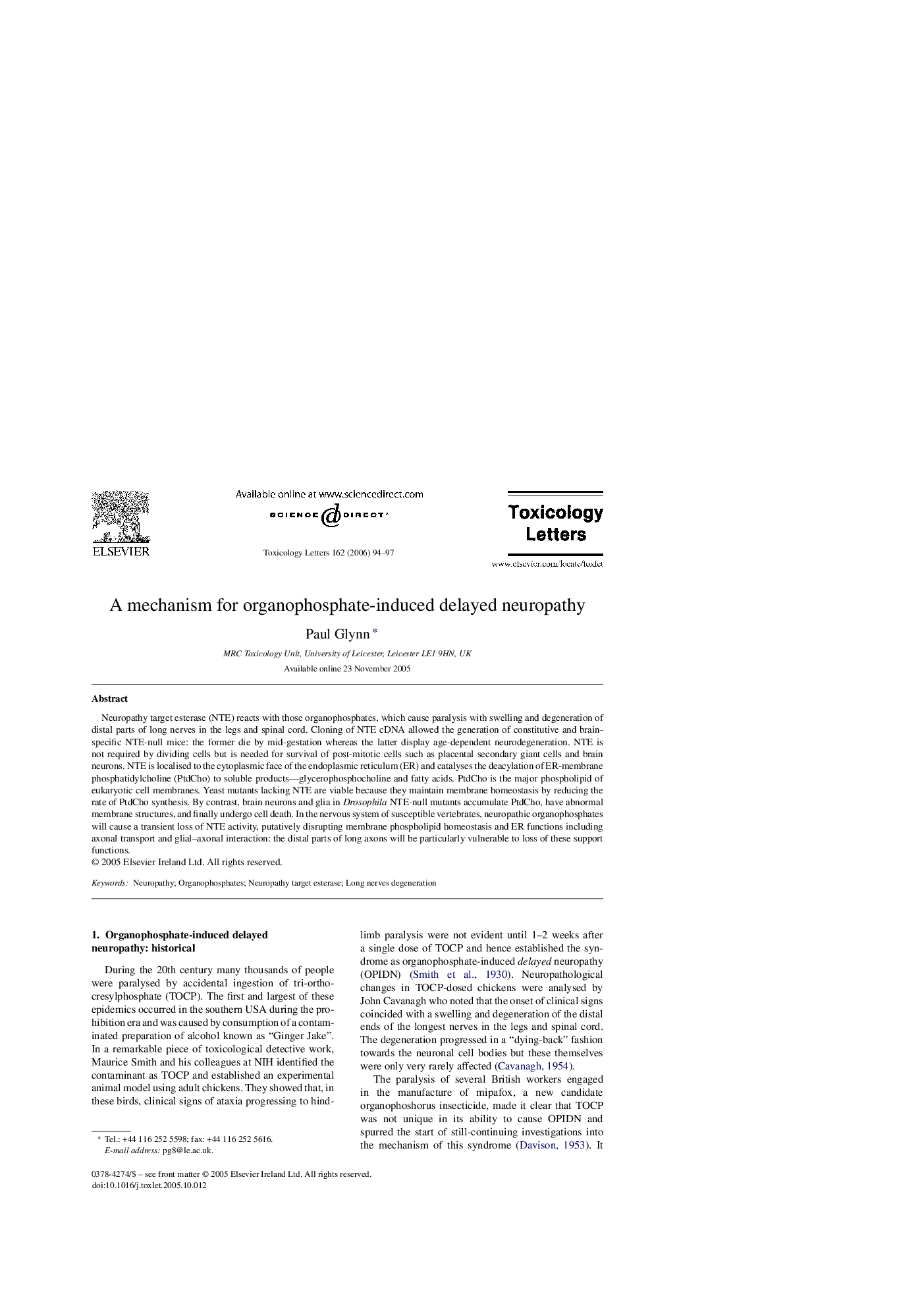| کد مقاله | کد نشریه | سال انتشار | مقاله انگلیسی | نسخه تمام متن |
|---|---|---|---|---|
| 2601397 | 1133317 | 2006 | 4 صفحه PDF | دانلود رایگان |

Neuropathy target esterase (NTE) reacts with those organophosphates, which cause paralysis with swelling and degeneration of distal parts of long nerves in the legs and spinal cord. Cloning of NTE cDNA allowed the generation of constitutive and brain-specific NTE-null mice: the former die by mid-gestation whereas the latter display age-dependent neurodegeneration. NTE is not required by dividing cells but is needed for survival of post-mitotic cells such as placental secondary giant cells and brain neurons. NTE is localised to the cytoplasmic face of the endoplasmic reticulum (ER) and catalyses the deacylation of ER-membrane phosphatidylcholine (PtdCho) to soluble products—glycerophosphocholine and fatty acids. PtdCho is the major phospholipid of eukaryotic cell membranes. Yeast mutants lacking NTE are viable because they maintain membrane homeostasis by reducing the rate of PtdCho synthesis. By contrast, brain neurons and glia in Drosophila NTE-null mutants accumulate PtdCho, have abnormal membrane structures, and finally undergo cell death. In the nervous system of susceptible vertebrates, neuropathic organophosphates will cause a transient loss of NTE activity, putatively disrupting membrane phospholipid homeostasis and ER functions including axonal transport and glial–axonal interaction: the distal parts of long axons will be particularly vulnerable to loss of these support functions.
Journal: Toxicology Letters - Volume 162, Issue 1, 15 March 2006, Pages 94–97